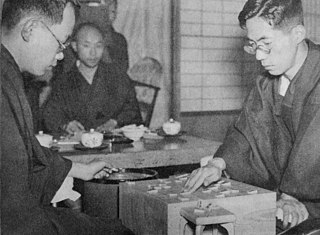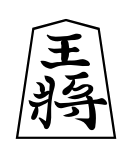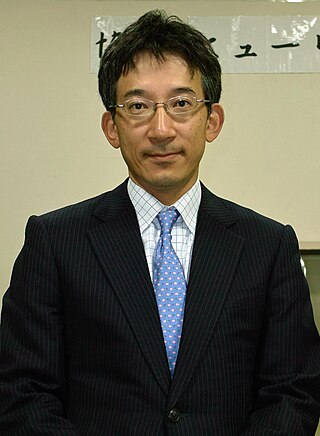This article relies largely or entirely on a single source .(August 2007) |
The titleholder system is the most common type of structure used in professional tournaments in the game of go [1] and shogi.
This article relies largely or entirely on a single source .(August 2007) |
The titleholder system is the most common type of structure used in professional tournaments in the game of go [1] and shogi.
In practice these events almost always are based in East Asian countries with a professional system: in Japan for go and shogi, and in China, South Korea and Taiwan for go. The system originated from competitions sponsored by Japanese newspapers, and has the effect that major events are spread out over a whole year of preliminaries, with a matchplay final that takes place over a month or two. While this makes tournaments slow-moving and diffuse by the standards of some other mind sports, rather than happening in a single place over a short time span, the system is well entrenched. The sponsoring newspapers can fill a daily column easily throughout the year, while the players can juggle commitments to a number of tournaments and outside interests by asking for scheduling that fits in everything.
Each of the major events has a complicated set of qualifying rounds to select a challenger. The qualifying system is a long series of single-elimination tournaments which may be combined with separate round-robin (league) systems. The single elimination tournaments involve lower-ranked pros, who are met with higher-ranked pros in later stages. The whole system is designed to produce a single challenger, who then goes on to play the titleholder. The titleholder is the previous year's winner of the tournament in interest, who will not have participated in the event up to this point. The final match of the titleholder and the challenger is either a best-of-seven or a best-of-five. Each game may be scheduled in a different city. Cities are chosen often in one country where the organizer operates but not limited to. For example for the Kisei tournament of go in Japan, the first game is often played outside Japan, for example in Europe or North America, to attract attention. The match then settles into a schedule of a game every two weeks or one week. The games take one day or two days to finish today. In the past it took longer; for Meijinsen of shogi in Japan, its earliest final games were designed to take three days.
The winner of the title match then enters the record books, and returns to defend the title the following year (cases where the title is for some reason not defended have been very rare). The most common measure of a top go and shogi player's success, in Japan at least, is the total number of titles accumulated.
Each titleholder system tournament allows its latest winner of the tournament to be styled with the name (title). Some but not every tournament allows its second latest winner to be styled ex-Title for one year and only. For example Ryu-oh tournament of shogi in Japan admits its winner in the previous year to be styled Zen-ryu-oh. Each tournament may have its own lifetime title qualification which gives the right to be styled Lifetime Title to the player who has accumulated wins at that tournament certain times. For example the Kisei tournament in Japan, the qualified player may be styled Eisei Kisei. It is often rare for active players to be styled with their lifetime titles, though it has happened multiple times, specially for aged notable players including Yasuharu Oyama.
In go, the first titleholder system of the modern pattern was the Honinbo tournament. Before that was introduced in the early 1940s, other systems used were the win-and-continue system, which has the advantage of low organisational overheads, and high-profile jubango . There has been no jubango since 1960, but win-and-continue systems are used in South Korea. Teams matches were also popular in the 1920s.
The introduction of international go events led to the adoption of new systems for those, mostly based on knockout rounds, and international titles are typically not awarded under the titleholder system. That is, the holder has to compete in the event's earlier stages, a system akin to the way tennis tournaments do it, with the champion perhaps avoiding preliminaries and being seeded into the final stages.
Kisei (棋聖) is an honorary title and Go competition. The title, meaning Go Sage in Japanese, was a traditional honorary appellation given to a handful of players down the centuries. The element ki can also apply to shogi, and there were also recognized kisei in the shogi world.

Yoshiharu Habu is a professional shogi player and a chess FIDE Master. He is a former holder of the Ryūō, Meijin, Ōi, Ōza, Kiō, Ōshō and Kisei major titles. He was the first person to simultaneously hold seven major professional shogi titles at the same time and is the only person to qualify as a lifetime title holder for seven major titles. In January 2018, Habu became the first professional shogi player to be awarded Japan's People's Honour Award. In June 2023, he was elected to the board of directors of the Japan Shogi Association (JSA), and chosen by the board to be the JSA president.
Kunio Yonenaga was a Japanese professional shogi player and president of Japan Shogi Association . He received an honorary title Lifetime Kisei due to his remarkable results in the Kisei title tournament. He is a former Meijin and 10-dan.

Meijin (名人) is one of the eight titles in Japanese professional shogi, and is the most prestigious title, along with Ryūō. The word meijin refers to a highly skilled master of a certain field.
Ryūō is an annual Japanese professional shogi tournament and the title of its winner. The current Ryūō title holder is Sōta Fujii.
Kisei (棋聖) is one of the eight major titles in Japanese professional shogi. The word Kisei means an excellent player of shogi or go and has been translated as "shogi saint".
Ōza (王座) is one of the eight titles in Japanese professional shogi.

Ōshō is one of the eight titles in Japanese professional shogi. The tournament is co-sponsored by Sports Nippon and the Mainichi Shimbun with additional support received from ALSOK and the Igo & Shogi Channel.
The NHK Cup, or as it is officially known the NHK Cup TV Shogi Tournament is a professional shogi tournament organized by the Japan Shogi Association and sponsored by Japan's public broadcaster NHK.
The 61st NHK Cup, or as it is officially known the 61st NHK Cup TV Shogi Tournament was a professional shogi tournament organized by the Japan Shogi Association and sponsored by Japan's public broadcaster NHK. Play began on April 3, 2011, and ended on March 18, 2012. The 50-player single elimination tournament was won by Yoshiharu Habu. All of the tournament games were shown each Sunday morning on NHK-E. The host during the NHK-E broadcasts was female professional Rieko Yauchi.
The 63rd NHK Cup, or as it is officially known the 63rd NHK Cup TV Shogi Tournament was a professional shogi tournament organized by the Japan Shogi Association and sponsored by Japan's public broadcaster NHK. Play began on April 7, 2013, and ended on March 23, 2014. The 50-player single elimination tournament was won by Masataka Gōda. All of the tournament games were shown on NHK-E. The host during the NHK-E broadcasts was female professional Rieko Yauchi.
Masayuki Toyoshima is a Japanese professional shogi player, ranked 9-dan. He is a former holder of the Ryūō, Meijin, Ōi, Kisei and Eiō titles.
Takuya Nagase is a Japanese professional shogi player ranked 9-dan. He is the current holder of the Ōza title and a former holder of the Eiō title.

Akira Watanabe is a Japanese professional shogi player ranked 9-dan. He is a former holder of the Meijin, Kisei, Ōshō, Ōza, Kiō and Ryūō titles. He is also a Lifetime Kiō and a Lifetime Ryūō title holder.

Yasumitsu Satō is a Japanese professional shogi player from Yawata City in Kyoto Prefecture, Japan.ranked 9-dan. He is a former preseident of the Japan Shogi Association as well as former holder of the Ryūō, Meijin, Oshō, Kisei, Kiō major titles. He has qualified for the Lifetime Kisei title.

Sōta Fujii is a Japanese professional shogi player ranked 9-dan. He is the current holder of the Eiō, Kisei, Ōi, Ōshō, Ryūō, Kiō and Meijin titles. He is the youngest person to be awarded professional status by the Japan Shogi Association and one of only five players to become professional while still a junior high school student.

Hiroyuki Miura is a Japanese professional shogi player, ranked 9-dan. He is a former Kisei title holder and became the first active Class A professional to lose to a computer when he lost to the GPS Shogi program in April 2013.
Kōichi Fukaura is a Japanese professional shogi player, ranked 9-dan. He is a three-time winner of the Ōi tournament, and also a former member of the Japan Shogi Association's board of directors.
Nobuyuki Yashiki is a Japanese professional shogi player ranked 9-dan. He is a former Kisei title holder and also holds the professional shogi record for being the fastest to win a major title since turning professional..
The Eiō (叡王) is one of the eight major titles of professional shogi cosponsored by Fujiya Co. and the Japan Shogi Association (JSA). The tournament initially started out as a non-title tournament in 2015, but was upgraded to major title status in May 2017. The current Eiō title holder is Sōta Fujii.